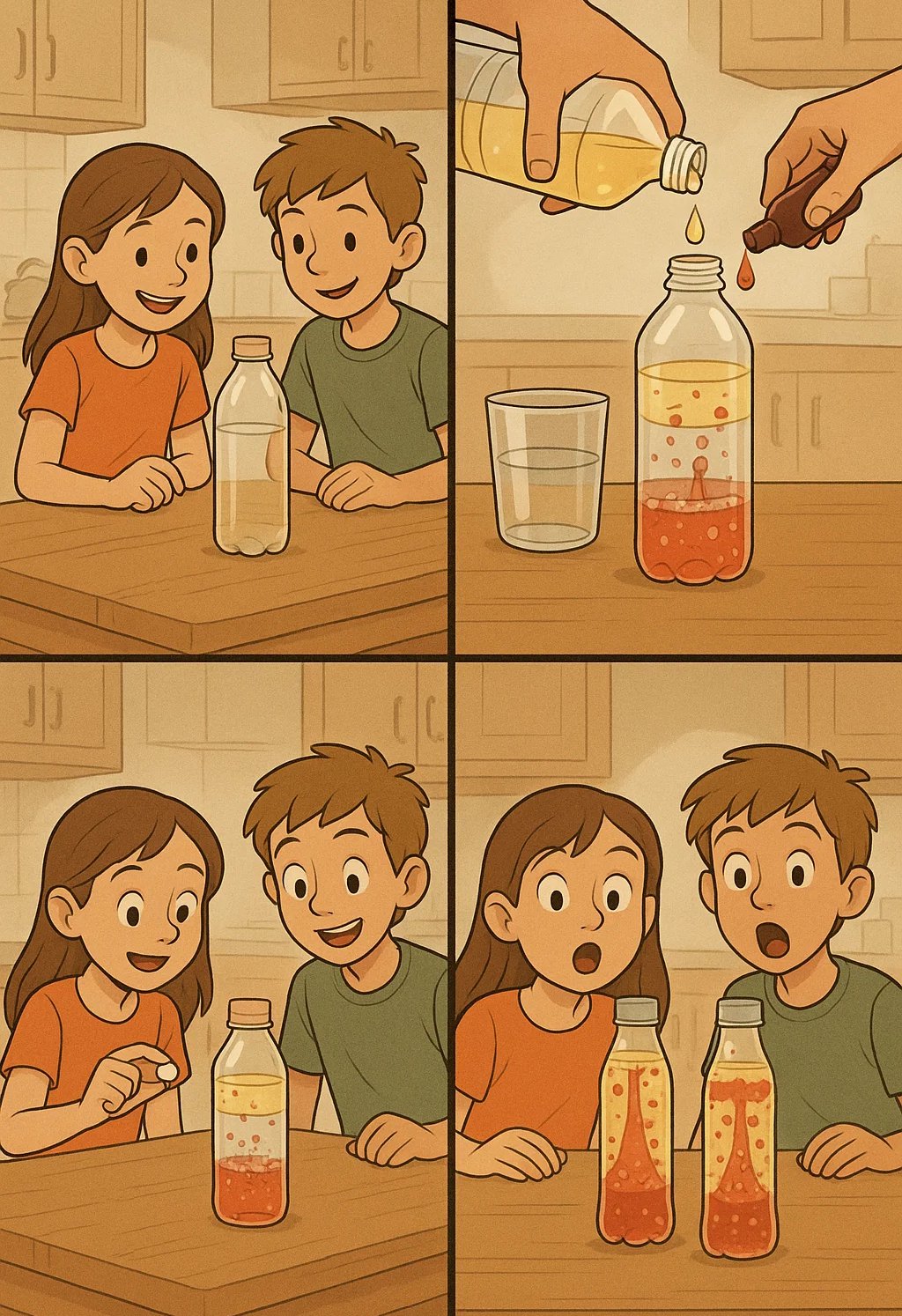🌈 Homemade Lava Lamps: Exploring Liquid Density 🧪✨
Looking for a fun and colorful science activity that doubles as decoration? 🧡💙💚 Homemade lava lamps are the perfect blend of chemistry and art. This experiment teaches liquid density and gas formation—all with things you probably already have at home! 🏠💡
TECHNOLOGY


Materials 🛒
A clear plastic or glass bottle 🧴
Vegetable oil 🟡
Water 💧
Food coloring 🎨
Alka-Seltzer tablets (or similar fizzing tablets) 💊
Optional: flashlight 🔦
Steps 🔧
Fill the bottle: Fill the bottle about 2/3 full with vegetable oil 🟡.
Add water: Slowly pour water into the bottle until it's nearly full 💧. Wait for the layers to separate (oil on top, water on bottom).
Color it up: Add a few drops of food coloring. The color will pass through the oil and mix with the water 🌈.
Drop the fizz: Break an Alka-Seltzer tablet into pieces and drop one in the bottle 🫧. Watch the lava lamp come to life!
Keep the show going: Add more tablet pieces when the bubbling slows down 🔁.
What’s Happening? 🧠
This experiment shows how liquids with different densities interact.
Water is denser than oil, so it stays at the bottom.
Alka-Seltzer reacts with the water to release carbon dioxide gas (CO₂) 💨.
The gas bubbles carry colored water droplets up through the oil 🌈⬆️.
When the gas escapes at the top, the water droplets fall back down ⬇️—just like a real lava lamp!
Applications 🔬
Demonstrates concepts of density, immiscibility, and gas production.
Used in classrooms to visually teach physical and chemical changes 🏫.
A creative way to introduce non-polar vs. polar liquids 🧪.
Safety Tips ⚠️
Do not seal the bottle tightly while the reaction is happening—gas buildup can cause pressure 💥.
Don’t drink or taste any of the contents 🛑.
Supervise young kids during the experiment 👩🏫.
